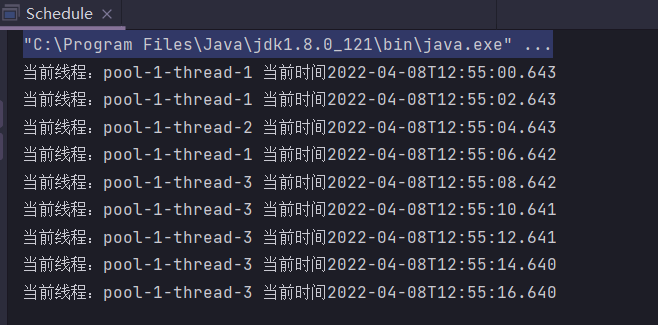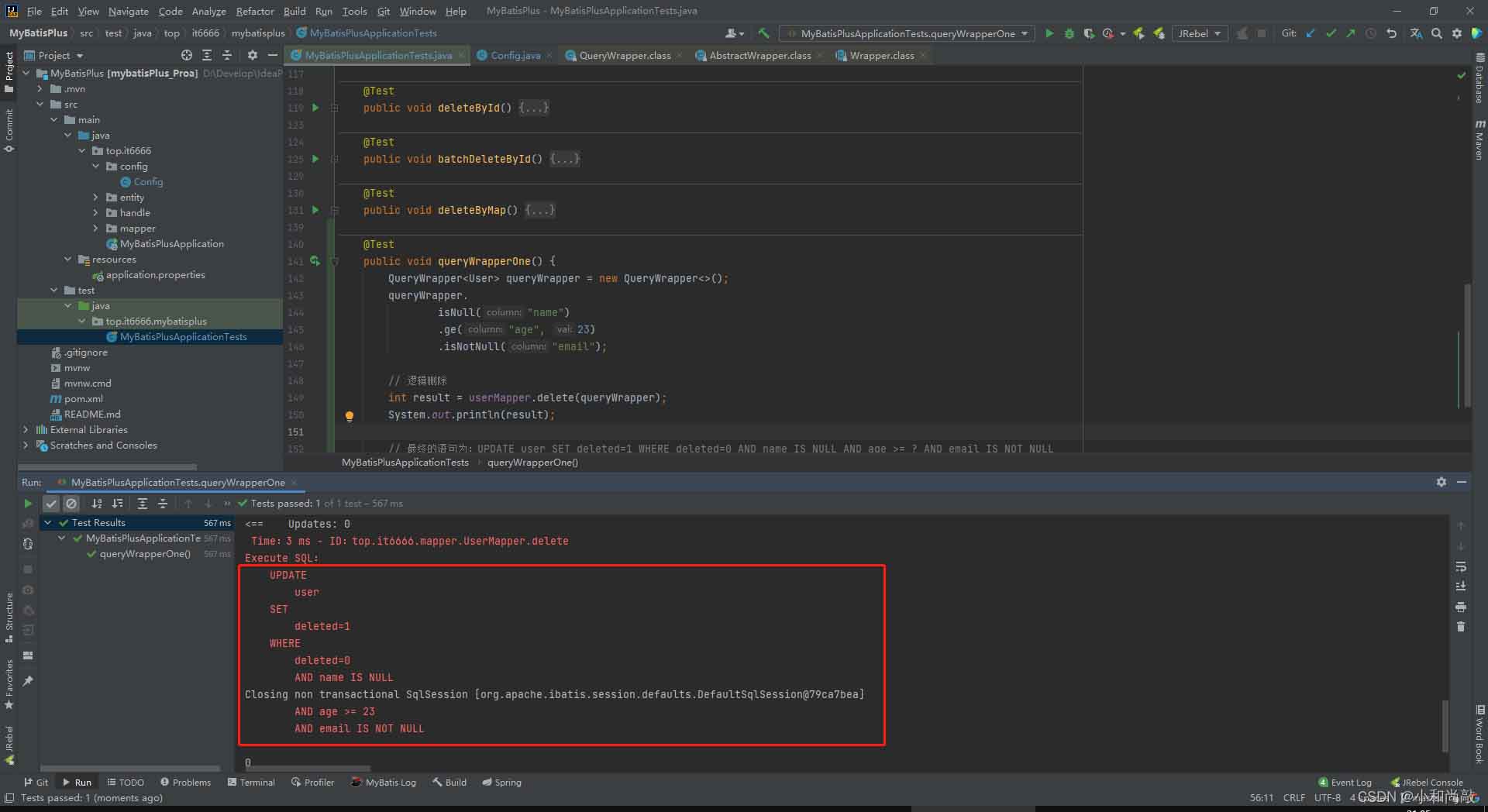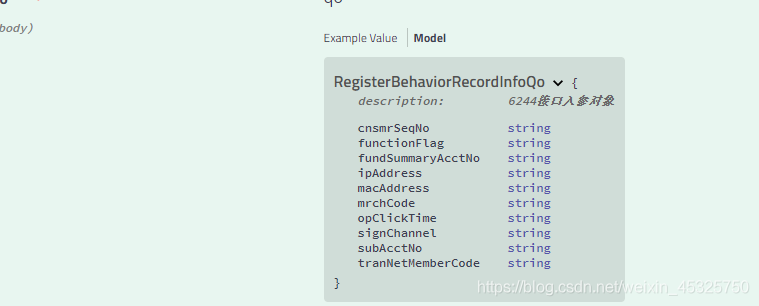这篇文章主要为大家详细介绍了Java界面编程实现界面跳转,文中示例代码介绍的非常详细,具有一定的参考价值,感兴趣的小伙伴们可以参考一下
本文实例为大家分享了Java界面编程实现界面跳转的具体代码,供大家参考,具体内容如下
在事件处理中创建对象
public void actionPerformed(ActionEvent e)
{
QQ1 qq1=new QQ1();//为跳转的界面
}步骤:
在主函数中创建一个主窗口的对象
package 界面编程7;
public class QQmain {
public static void main(String[] args) {
// TODO Auto-generated method stub
QQ qq = new QQ();
}
}编写QQ类,该类中调用QQ1类、QQ2类 表达不正确,反正就是调用被调用类的构造方法
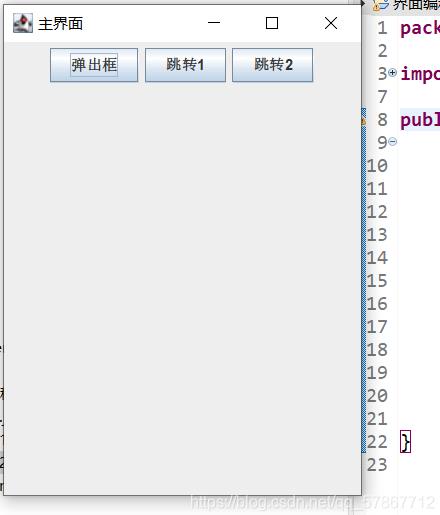
package 界面编程7;
import java.awt.FlowLayout;
import java.awt.event.ActionEvent;
import java.awt.event.ActionListener;
import javax.swing.JButton;
import javax.swing.JFrame;
import javax.swing.JLabel;
import javax.swing.JOptionPane;
import javax.swing.JTextArea;
public class QQ extends JFrame implements ActionListener{
public QQ() {
this.setTitle("主界面");
this.setBounds(100, 100, 300, 400);
this.setDefaultCloseOperation(EXIT_ON_CLOSE);
this.setVisible(true);
FlowLayout layout = new FlowLayout();
this.setLayout(layout);
JButton jb1 = new JButton("弹出框");
JButton jb2 = new JButton("跳转1");
JButton jb3 = new JButton("跳转2");
this.add(jb1);
this.add(jb2);
this.add(jb3);
jb1.addActionListener(this);
jb1.addActionListener(new ActionListener()
{
public void actionPerformed(ActionEvent e)
{
JOptionPane.showMessageDialog(null, "提示内容" ,"标题", 2);
}
});
jb2.addActionListener(this);
jb2.addActionListener(new ActionListener()
{
public void actionPerformed(ActionEvent e)
{
QQ1 qq1=new QQ1();//为跳转的界面
}
});
jb3.addActionListener(this);
jb3.addActionListener(new ActionListener()
{
public void actionPerformed(ActionEvent e)
{
QQ2 qq2=new QQ2();//为跳转的界面
}
});
}
@Override
public void actionPerformed(ActionEvent e) {
// TODO Auto-generated method stub
System.out.println("总处理");
}
}QQ1类 该类中调用QQ2类

package 界面编程7;
import java.awt.FlowLayout;
import java.awt.event.ActionEvent;
import java.awt.event.ActionListener;
import javax.swing.JButton;
import javax.swing.JFrame;
public class QQ1 extends JFrame implements ActionListener{
public QQ1() {
this.setTitle("界面1");
this.setBounds(200, 200, 300, 400);
this.setDefaultCloseOperation(EXIT_ON_CLOSE);
this.setVisible(true);
FlowLayout layout = new FlowLayout();
this.setLayout(layout);
JButton jb1 = new JButton("跳转");
this.add(jb1);
jb1.addActionListener(this);
}
@Override
public void actionPerformed(ActionEvent e) {
QQ2 qq3 = new QQ2();
}
}QQ2类

package 界面编程7;
import java.awt.FlowLayout;
import javax.swing.JFrame;
import javax.swing.JLabel;
public class QQ2 extends JFrame{
public QQ2() {
this.setTitle("界面2");
this.setBounds(200, 200, 300, 400);
this.setDefaultCloseOperation(EXIT_ON_CLOSE);
this.setVisible(true);
FlowLayout layout = new FlowLayout();
this.setLayout(layout);
JLabel jlb = new JLabel("界面2");
this.add(jlb);
}
}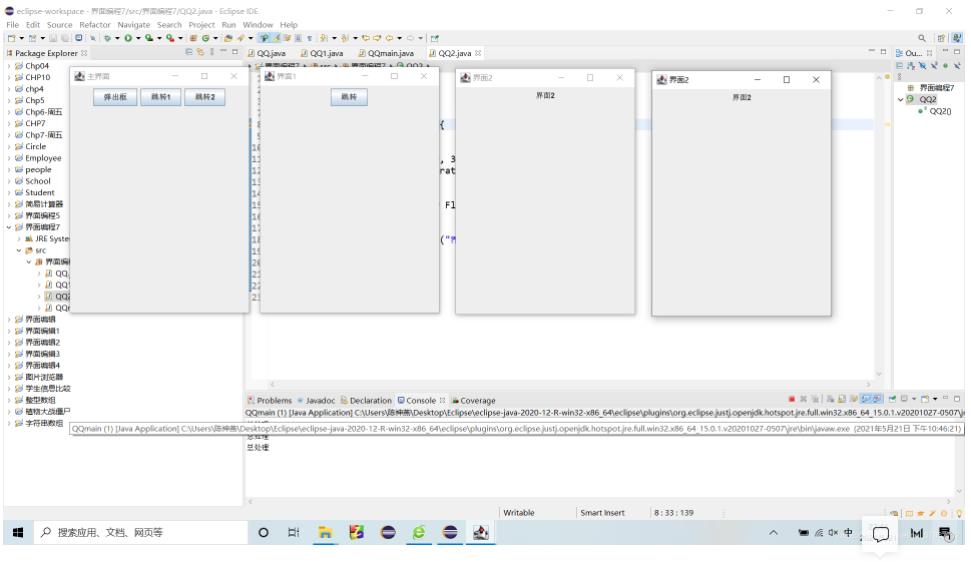
以上就是本文的全部内容,希望对大家的学习有所帮助,也希望大家多多支持编程学习网。
沃梦达教程
本文标题为:Java界面编程实现界面跳转


基础教程推荐
猜你喜欢
- 使用Java和WebSocket实现网页聊天室实例代码 2024-02-25
- 是否适合从javabean类更新数据库? 2023-11-04
- JSP 动态树的实现 2023-12-17
- Java编写实现窗体程序显示日历 2023-01-02
- Java中EnvironmentAware 接口的作用 2023-01-23
- springboot下使用shiro自定义filter的个人经验分享 2024-02-27
- 运用El表达式截取字符串/获取list的长度实例 2023-08-01
- Java+mysql实现学籍管理系统 2023-03-16
- 深入理解约瑟夫环的数学优化方法 2024-03-07
- JavaWeb 实现验证码功能(demo) 2024-04-14









